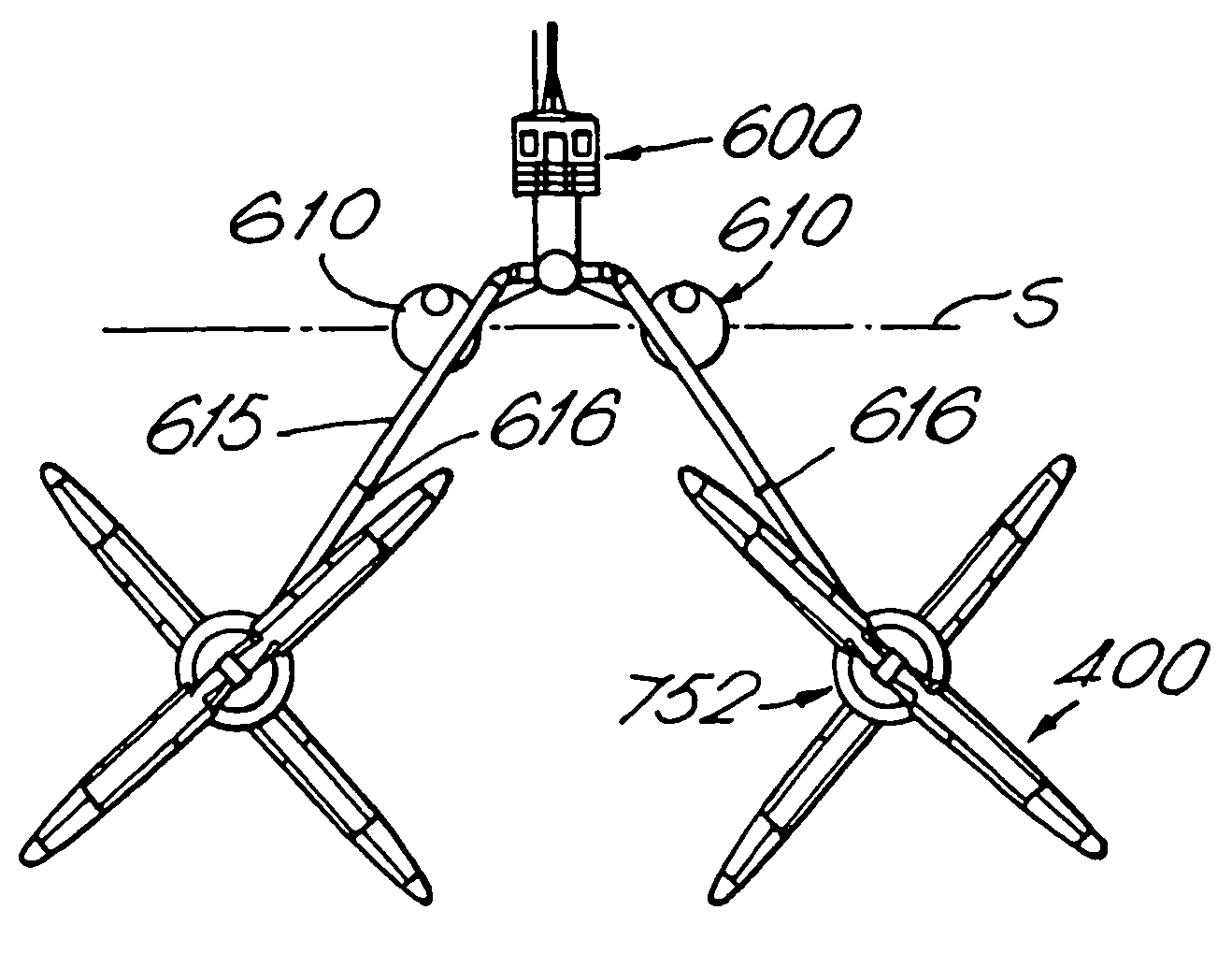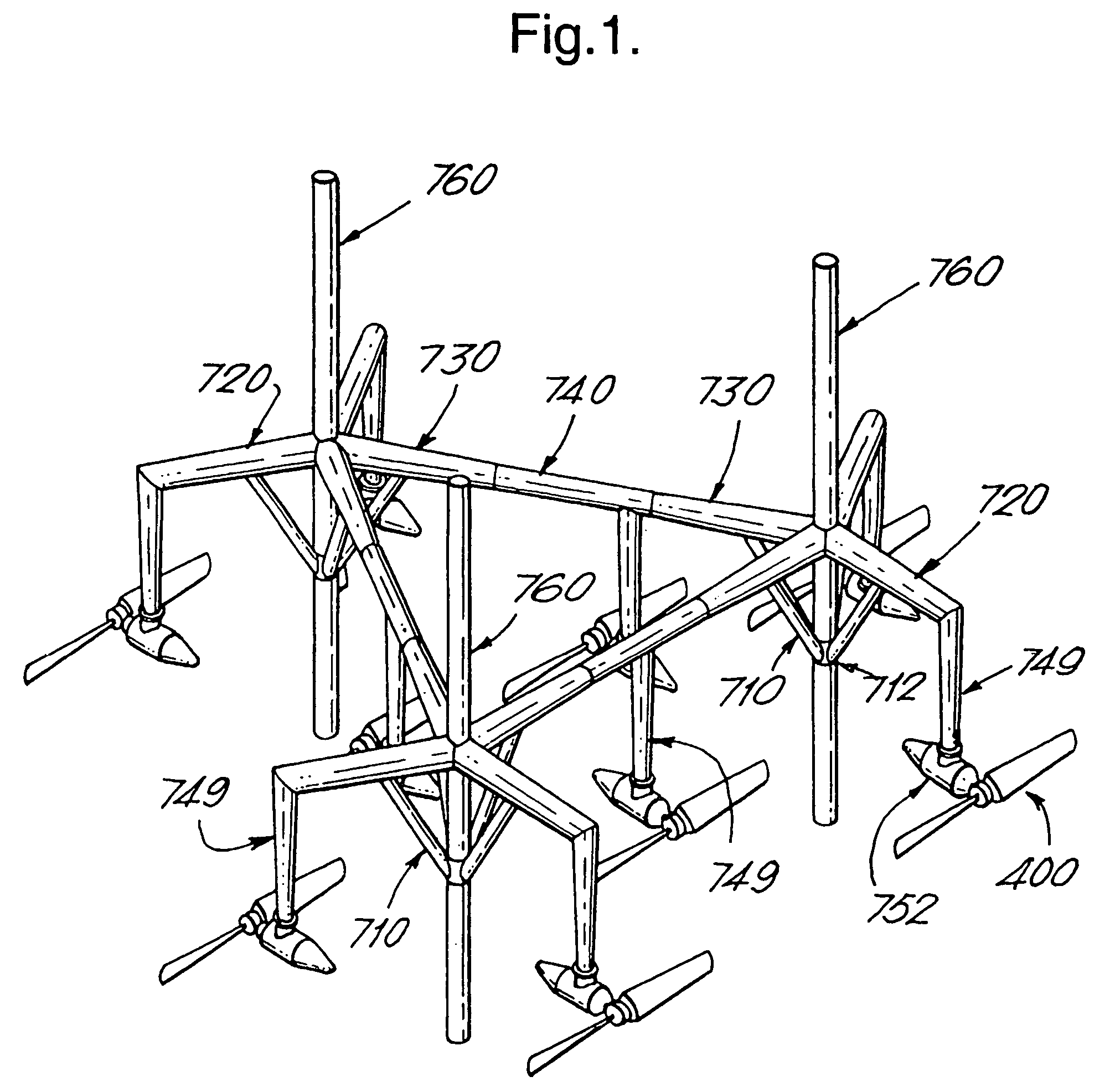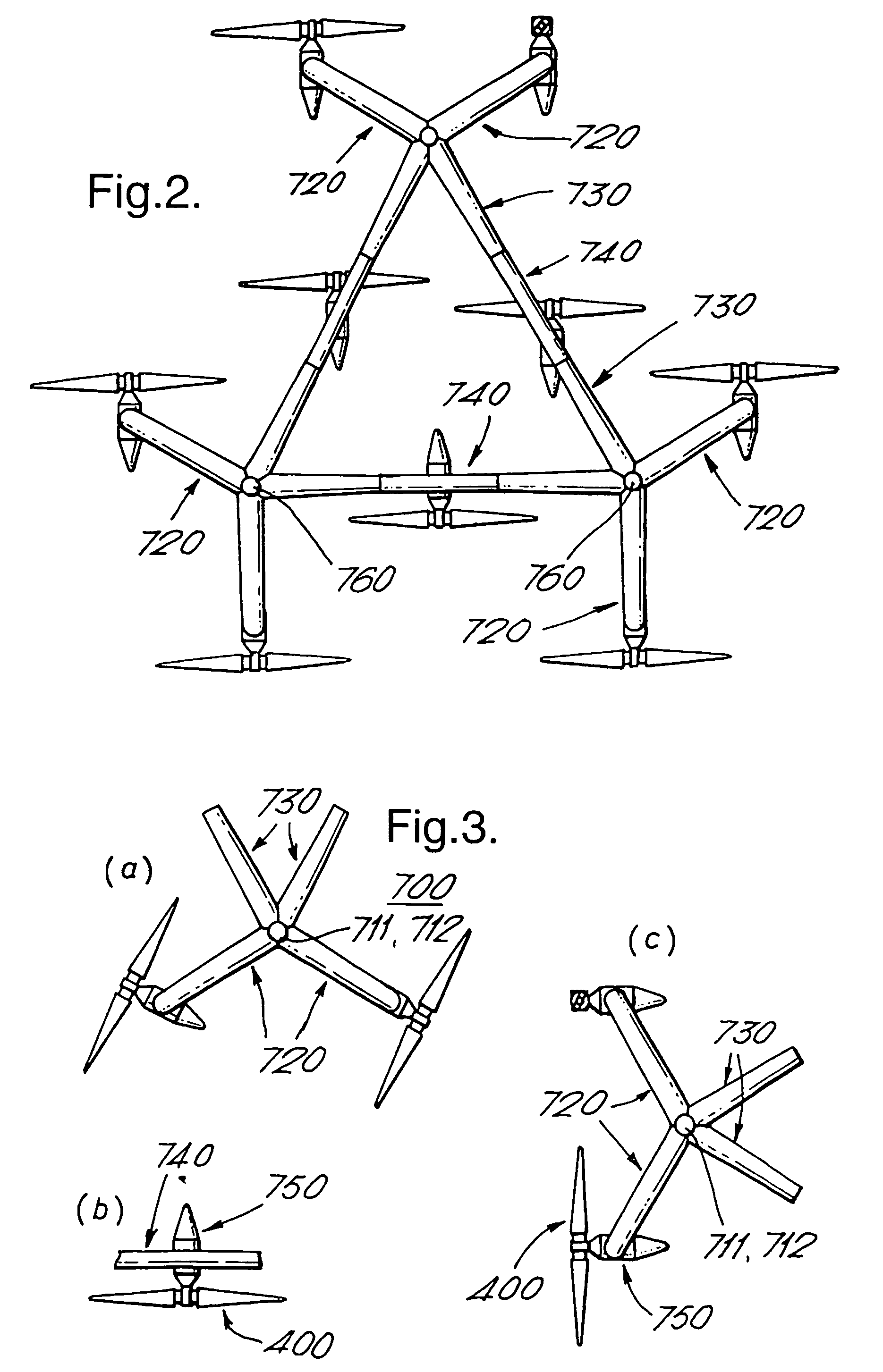Plant, generator and propeller element for generating energy from watercurrents
a technology of propeller elements and water currents, applied in the direction of electrical apparatus, climate sustainability, artificial islands, etc., can solve the problems of further energy loss, complex solution, electrical and mechanical power loss,
- Summary
- Abstract
- Description
- Claims
- Application Information
AI Technical Summary
Benefits of technology
Problems solved by technology
Method used
Image
Examples
Embodiment Construction
[0053]In one embodiment, the plant according to the invention comprises a structure capable of resting on a bottom B below the surface S of a body of water. The structure supports a plurality of replaceable generator units 750 which are driven by the water currents. The plant structure is built up of a plurality of nodal elements 700 having a respective nodal centre, and substantially horizontal supporting members 720 and connecting members 730 projecting therefrom. Upper and lower bushings 711, 712 for a height adjustable leg 760 extending towards the bottom B pass through each nodal centre.
[0054]The nodal elements 700 are interconnected by means of intermediate connecting members 740 between the connecting members 730.
[0055]The generator units 750 are secured to substantially vertical supporting members 749, each of which may be secured to the horizontal supporting members 720 or the intermediate connecting members 740.
[0056]For production and hydrodynamic reasons, the arms, the s...
PUM
 Login to View More
Login to View More Abstract
Description
Claims
Application Information
 Login to View More
Login to View More - R&D
- Intellectual Property
- Life Sciences
- Materials
- Tech Scout
- Unparalleled Data Quality
- Higher Quality Content
- 60% Fewer Hallucinations
Browse by: Latest US Patents, China's latest patents, Technical Efficacy Thesaurus, Application Domain, Technology Topic, Popular Technical Reports.
© 2025 PatSnap. All rights reserved.Legal|Privacy policy|Modern Slavery Act Transparency Statement|Sitemap|About US| Contact US: help@patsnap.com



